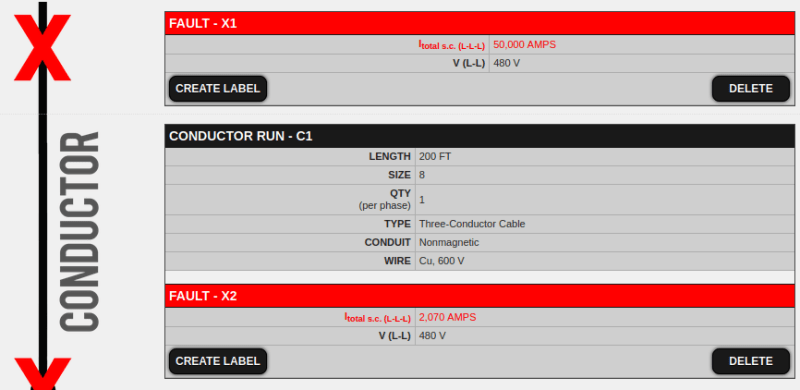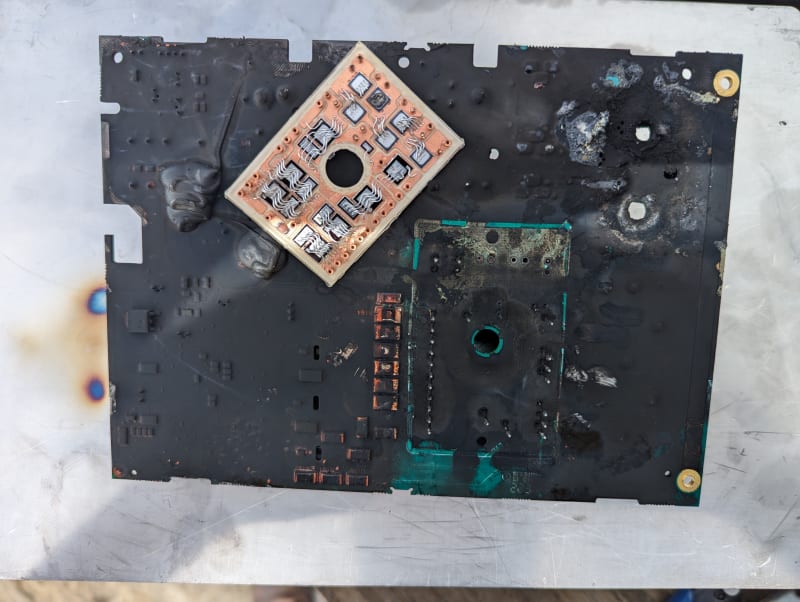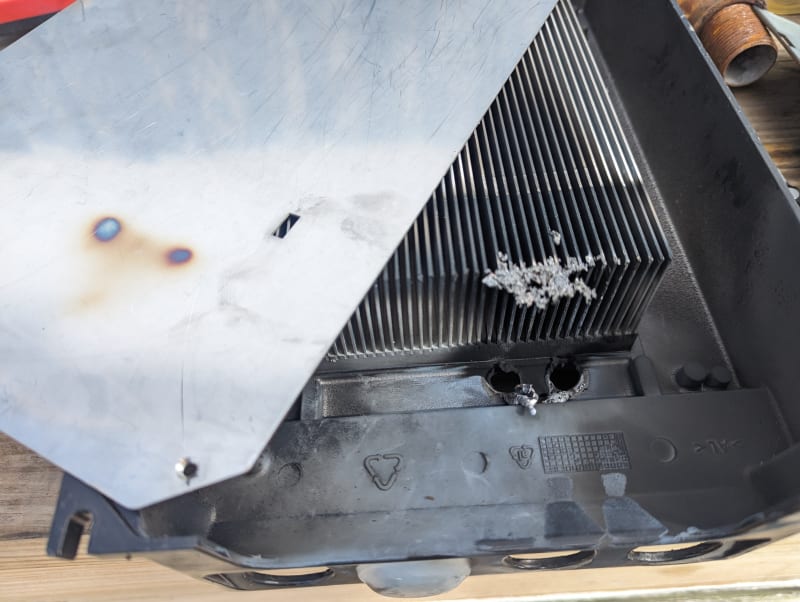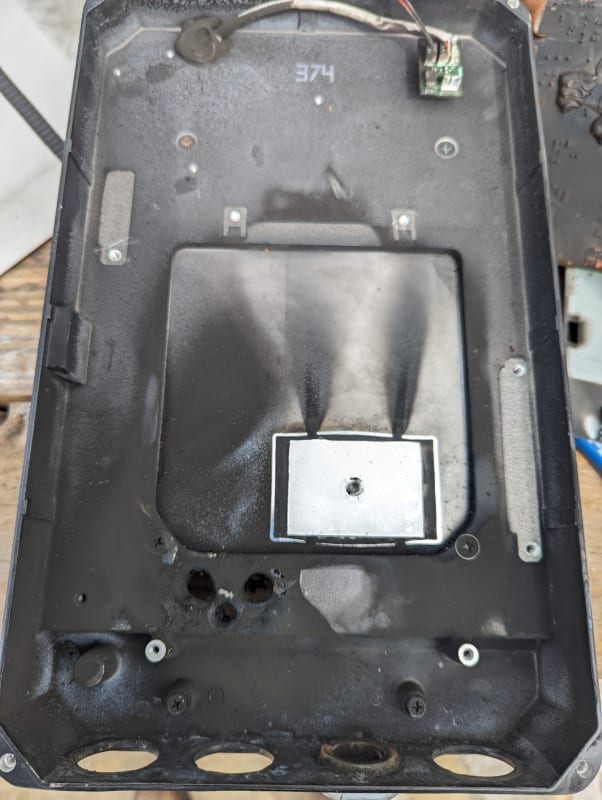TugboatEng
Marine/Ocean
I feel like this is going to by a warranty issue so I can't disassemble further to get a more clear view of the cause but I present this story for any thoughts.
I installed a new 10hp, 480 volt VFD on a pump the other day. I tested and ran the pump for a short time while I got the parameters squared away. About 24 hours later while the drive was energised and NOT running this happened.
I'm curious, in the first picture it detonated one of the wires leading into the disconnect switch. It also detonated all 3 wires between the disconnect switch and the circuit board. It also burned the leads on the components in the final picture, they appear to be MOV's. The fault didn't clear a 40 amp breaker. The input wiring was 8 gauge and the 3 leads that failed were 10 gauge.
This failure is odd to me. I don't usually see all 3 phases go short circuit. This drive is in a high vibration environment. In fact, the 4 year old soft starter it's replacing died because all of its capacitors vibrated off the board and it appears one caused a reverse polarity event when it rotated around it's still connected lead. I mounted this one on soft mounts and was surprised to see a failure with 24 hours.
At the time of failure the system was being grid supplied through 60 amp current limiting fuses. It was a significant enough draw to brown out the vessel multiple times.
I also undersized the drive as the motor had no legible nameplate and I had to guess, incorrectly. During testing the motor pulled 14.5 amps and the drive is rated for 16 amps at ambient conditions.
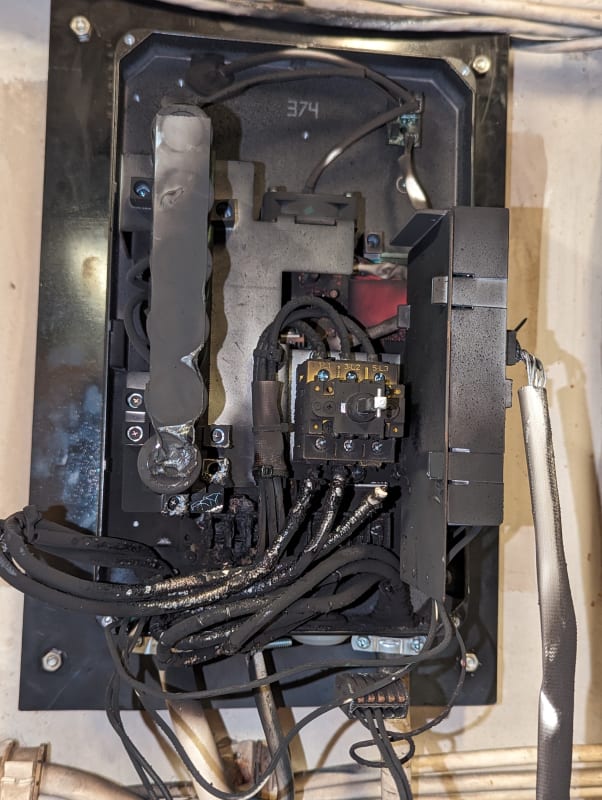
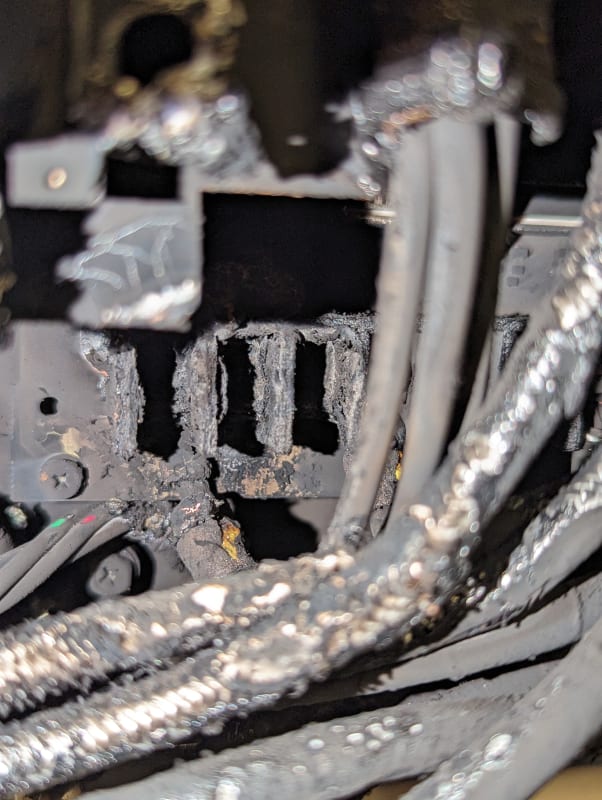
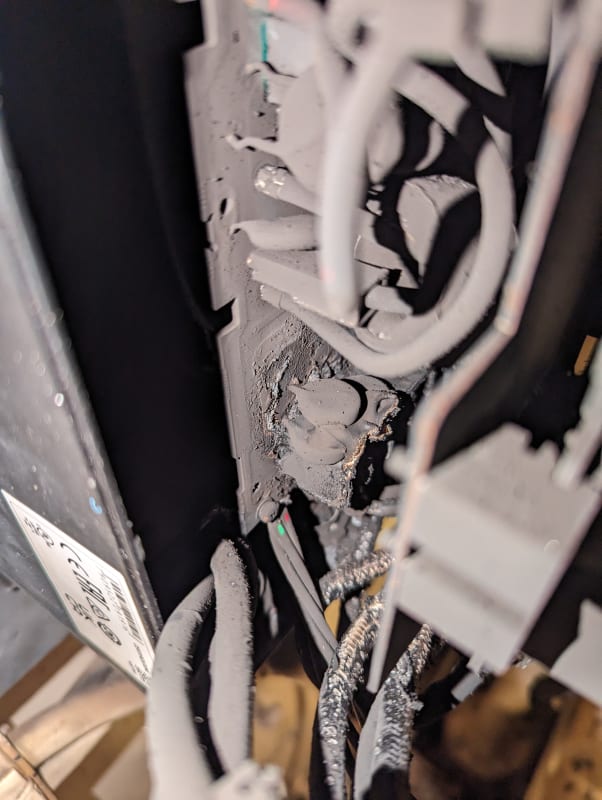
I installed a new 10hp, 480 volt VFD on a pump the other day. I tested and ran the pump for a short time while I got the parameters squared away. About 24 hours later while the drive was energised and NOT running this happened.
I'm curious, in the first picture it detonated one of the wires leading into the disconnect switch. It also detonated all 3 wires between the disconnect switch and the circuit board. It also burned the leads on the components in the final picture, they appear to be MOV's. The fault didn't clear a 40 amp breaker. The input wiring was 8 gauge and the 3 leads that failed were 10 gauge.
This failure is odd to me. I don't usually see all 3 phases go short circuit. This drive is in a high vibration environment. In fact, the 4 year old soft starter it's replacing died because all of its capacitors vibrated off the board and it appears one caused a reverse polarity event when it rotated around it's still connected lead. I mounted this one on soft mounts and was surprised to see a failure with 24 hours.
At the time of failure the system was being grid supplied through 60 amp current limiting fuses. It was a significant enough draw to brown out the vessel multiple times.
I also undersized the drive as the motor had no legible nameplate and I had to guess, incorrectly. During testing the motor pulled 14.5 amps and the drive is rated for 16 amps at ambient conditions.




